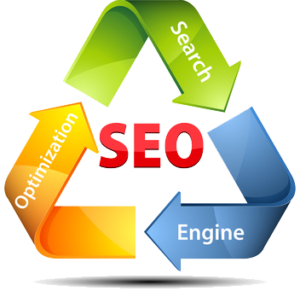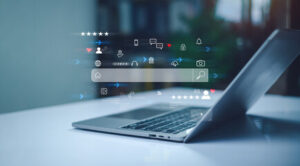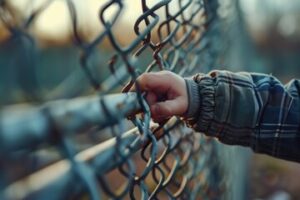Corporate Housing is an ideal solution for business travelers, relocating employees and others in need of short-term housing. Generally located within an apartment community, condo or single-family home, these furnished units are a comfortable alternative to hotels.
Fully Furnished Units: From large furniture pieces to small items like salt and pepper shakers, each corporate rental is comprehensively furnished. Plus, utilities are typically included, simplifying the move-in process and ongoing stay. Contact Corporate Housing San Antonio TX now!

Whether you’re a business traveler looking for an alternative to hotel stays, a relocating employee preparing to move to a new city, or a project team needing a cohesive living arrangement, corporate housing can be a cost-effective and comfortable choice. In addition to providing a home-like environment and eliminating the need for additional travel expenses, it often comes with concierge-style services, such as grocery delivery and housekeeping.
Unlike hotels, which often have minimum stay requirements and charge per night, corporate housing provides month-to-month leases and is a great option for temporary stays. Depending on your situation, you can even select from homes, condos or apartments with amenities like pools, gyms and other social spaces that are perfect for hosting guests.
Most importantly, these accommodations are designed for people who live in them, so they have the comforts of a fully-furnished apartment or home. With well-equipped kitchens, cozy bedrooms, stylish living areas, and all-inclusive utilities, they are a welcome break from the hassle of packing up your belongings and moving into a rental. Most importantly, these temporary apartments have everything you need to feel at home, including all-inclusive laundry facilities.
For many professionals, the line between work and life is increasingly blurred, especially as more companies embrace remote working policies. As a result, the need for affordable, flexible short-term accommodations has grown. Corporate housing provides the ideal solution, with its unique blend of comfort, convenience and affordability.
Corporate housing is commonly used by professionals relocating for work, but it’s also popular among military personnel, interns, and digital nomads. In fact, with the rise of remote work, corporate housing providers are seeing an increased demand for this type of accommodation worldwide.
Typically located near business districts, corporate housing is an excellent option for professionals who need to be close to their office and client sites. This convenience reduces commute times and makes it easier for employees to get to know a new city and settle into their role faster. It also eliminates the need to pay additional travel expenses and makes it more cost-effective than staying in a traditional rental.
Convenience
Whether it’s a business traveler looking for a home-like place to stay, a relocating employee who wants to make a smooth transition into their new city, or a family that needs temporary housing during home repairs, corporate apartments provide a comfortable and convenient solution. The occupants of corporate rentals tend to be professional individuals or organizations, and they are generally well-behaved and respectful. In addition, they are usually aware that their behavior and the way they treat your property reflects on their employer. This minimizes concerns over the potential for damage or misuse of the property that might be a problem with vacation rental tenants or hotel guests.
Corporate housing providers offer a wide variety of apartment options that can be customized to meet individual needs and preferences. For example, some units are handicap-accessible, pet-friendly, or offer different bedroom configurations to accommodate families. Additionally, corporate apartments are available in many different locations, including condo communities and single-family homes.
The amenities provided by corporate apartments are designed to be more home-like than hotel rooms, with a full kitchen and living area that provides more space and flexibility than extended-stay hotels. In addition, utilities are typically included in the rent, eliminating the need for separate utility accounts. This is a significant benefit for those who are traveling or relocating for work.
In addition, a corporate housing provider can manage the entire rental process for clients, including arranging tours of available apartments, negotiating lease terms, and processing payment. This allows real estate agents to focus on finding the right home for their clients.
When compared to hotels and vacation rentals, corporate housing is also cost-effective. This is especially true for stays of 30 days or more. There is no lodging tax for extended stays, and meals can be prepared at the apartment to reduce meal costs. Moreover, unlike vacation rentals, corporate apartments are fully furnished and come with all the basics, such as a washer and dryer and linens. This makes them a great option for travelers who want to save money and avoid the hassle of packing up their belongings after each trip.
Convenient Locations
Whether it’s for a few weeks or a few months, corporate housing is designed to be the perfect mix of work and life. According to Gabriel, a VP of Sales and Marketing at Viciniti, corporate housing is essentially “fully furnished temporary housing that is meticulously coordinated by service providers.” It’s an ideal solution for people on business travel or short term relocations.
Corporate housing provides privacy and independence, unlike hotels that can be noisy and crowded. Plus, many of these rentals include a full kitchen, as opposed to hotel room kitchenettes with limited accoutrements. This makes them feel more like home. Additionally, guests can customize the space with personal items. This gives them a sense of ownership and makes them less likely to miss their own belongings, which can be an issue when living out of a suitcase for an extended period of time.
Another advantage of corporate housing is that it is usually located in central areas, which can be especially beneficial for those who must be close to work. In fact, these accommodations are popular among healthcare professionals on temporary assignments such as traveling nurses and locum tenens physicians who need comfortable, convenient places to live while working remotely.
In addition to convenience, corporate housing is often much more affordable than hotel rooms and comes with a range of other benefits. For example, most of these rentals come with fully furnished kitchens and all utilities are included in the rental cost, which is a big savings for relocating employees. Additionally, many of these rentals offer amenities such as a washer/dryer and a private entrance, which can be a big help when traveling for work.
Moreover, these rentals also help to reduce the stress of relocating for work by eliminating a number of moving costs. Lastly, these rentals are often more reliable than Airbnb-style rentals because of the consistent follow-ups from service providers who manage the properties.
With the myriad of benefits, it’s no wonder that corporate housing is a growing trend among companies looking to attract and retain talent. In fact, a study by the Society for Human Resource Management found that companies are increasingly offering housing as part of their compensation packages to relocated employees.
Affordability
Affordability is a key aspect of corporate housing, as it provides a comfortable and cost-effective alternative to hotel stays. Its all-inclusive pricing model allows clients to save money by eliminating the need for additional expenses such as meal outlays and cleaning services. Additionally, many short-term corporate rentals are located in residential areas, providing a quieter and more relaxed environment than hotel districts. Clients may also enjoy a variety of amenities such as swimming pools, fitness centers, and housekeeping services.
In addition to the affordable prices, corporate housing is often tax-free for extended stays of 30 days or more, which helps alleviate budget concerns. Furthermore, its fully-furnished living space reduces the need for clients to spend time and money shopping for their own furniture or household items, allowing them to settle into their new home immediately.
One of the most significant advantages that corporate housing offers over traditional rental accommodations is that it offers a full range of amenities, including Internet and cable television, as part of the monthly rent. This makes it easy for clients to stay connected while on the road and allows them to avoid the high costs associated with hotel amenities such as room service and in-room entertainment.
Corporate housing is available in a wide range of locations, from apartment communities to condo communities and even single-family homes. This flexibility is especially important for companies with a variety of employee relocation needs. Corporate housing providers are also able to provide a variety of features and upgrades, such as kitchen appliances, washers and dryers, and garage parking.
While some people are concerned that the increased availability of corporate housing will affect the affordability of traditional rental properties, this type of housing is a unique and much-needed option for business travelers, families on vacation or training, or individuals relocated for insurance claims or medical treatment. Cities that focus on promoting this housing as an attractive and affordable alternative to hotels will have an advantage in attracting talent and growing their economies. The same is true for the real estate market, where developers can use corporate housing to attract a more diverse group of tenants than they would otherwise be able to reach.








